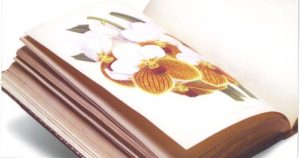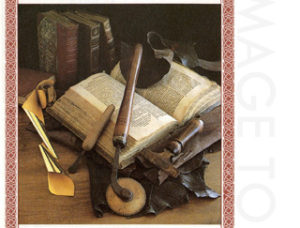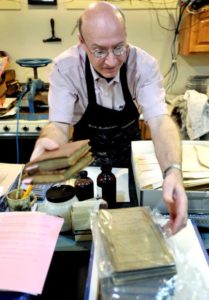
Although many historic events have been recorded on film, videotape and other media, most of our heritage is preserved on written records, and conservators work very hard to ensure that those records retain their permanency for future generations.

The best preventative measure individuals and institutions can take is to store their valued materials in a controlled environment. The Library of Congress and others recommend that records be kept away from exposure to the sun and fluorescent lighting. Temperatures between 60 degrees and 70 degrees and a moderate relative humidity of 40 percent to 50 percent will greatly reduce the rate of deterioration. Water and fireproof storage areas also contribute to long-term protection. Acidic paper should be deacidified.
Furthermore, damage and deterioration can be prevented if materials are handled carefully and if they are stored in special protective boxes. Large, heavy books should be stored flat on their back cover. Inexpensive folders can be used to effectively prolong the life of fragile documents and photographs.

“I love books. They are a link to the past and heirlooms for the future. As a conservator and restorer, I protect the printed work from the ravages of time. There is a sense of immortality in that one’s work will outlive oneself.”
“Books are the memory of a culture. Everything we know about the past, except through archaeology, we know through books.”
James E. Twomey